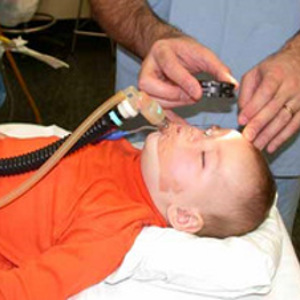Retinoblastoma Follow Up

Follow up after initial or primary treatment of RB depends on whether your child presented with Unilateral or Bilateral RB or whether there was already a history of RB in the family:
Unilateral Sporadic Retinoblastoma
There is a small risk (approximately 10%) that your child has the genetic or heritable form of retinoblastoma, and so will require ongoing review by your eye doctor. Your child will need regular Examinations Under Anaesthesia (EUA’s) by their eye doctor until the age of four and a half to five years. This is a quick check, which only takes a few minutes, but must be performed whilst your child is asleep under general anaesthesia. Your eye doctor will look for evidence of small new tumours in the healthy eye which would indicate that they have the heritable form of the disease.
EUAThe results of the EUA will be shared with you immediately following the procedure. You should expect the outcome to be favourable, with the risk of inheritable retinoblastoma reducing with every normal EUA. If new tumours are discovered in the healthy eye, the treatment and implications of this form of retinoblastoma will be discussed in detail with you.
EUAs are conducted every three months in the first year of life, every four months in the second year of life, and then every six months until the age of five. At the age of four and a half or five, the examination of your child’s eye may be undertaken will they are awake in the clinic.
After the age of five, your child will be discharged form regular ophthalmic review, but your eye doctor will be more than happy to see you at any time if there are problems or issues that you would like to discuss.
It would be wise for your child to wear impact resistant safety glasses when playing sport or performing tasks or jobs where there is a risk of eye injury. These are available from your optometrist and the details can be discussed with them.
Bilateral Sporadic and Familial Retinoblastoma
Your child will need regular Examinations Under Anaesthesia (EUA’s) by your eye doctor at least until the age of five years. This is a quick check of the remaining eye or eyes, which may only take a few minutes, but must be performed under general anaesthesia.
During the initial eight cycles of chemotherapy, an EUA will be performed after every two cycles to assess the response of the tumour(s) to the chemotherapy. A drawing or photograph of the tumour(s) will be taken each time so that comparisons can be made.
After completion of the full eight courses of chemotherapy, your eye doctor will continue to perform EUA’s on a regular basis. If the tumours are remaining well controlled, EUAs will be conducted every three months in the first year of life, every four months in the second and third years of life, and then every six months until the age of five. At the age of five, the examination of your child’s eye(s) may be undertaken whilst they are awake in the clinic. These examinations will need to continue at least until the age of seven.
The aim of these examinations is to look for evidence of small new tumours which may continue to appear or recurrences from the tumour(s) that have already been treated.
The results of the EUA will be shared with you immediately following the procedure. If new or recurrent tumours are discovered, the necessary treatment will be discussed in detail with you and then carried out during a separate anaesthetic (please follow the “Bilateral RB” link below for further information). Occasionally freezing treatment or cryotherapy of small new tumours will be carried out at the time of the EUA.
After the age of seven, your child may be discharged form regular ophthalmic review, but they will need to have regular ongoing review by their paediatric oncologist.
If your child has had enucleation of an eye, it would be wise for them to wear impact resistant safety glasses when playing sport or performing tasks or jobs where there is a risk of injury to their remaining eye. These are available from your optometrist and the details can be discussed with them.
